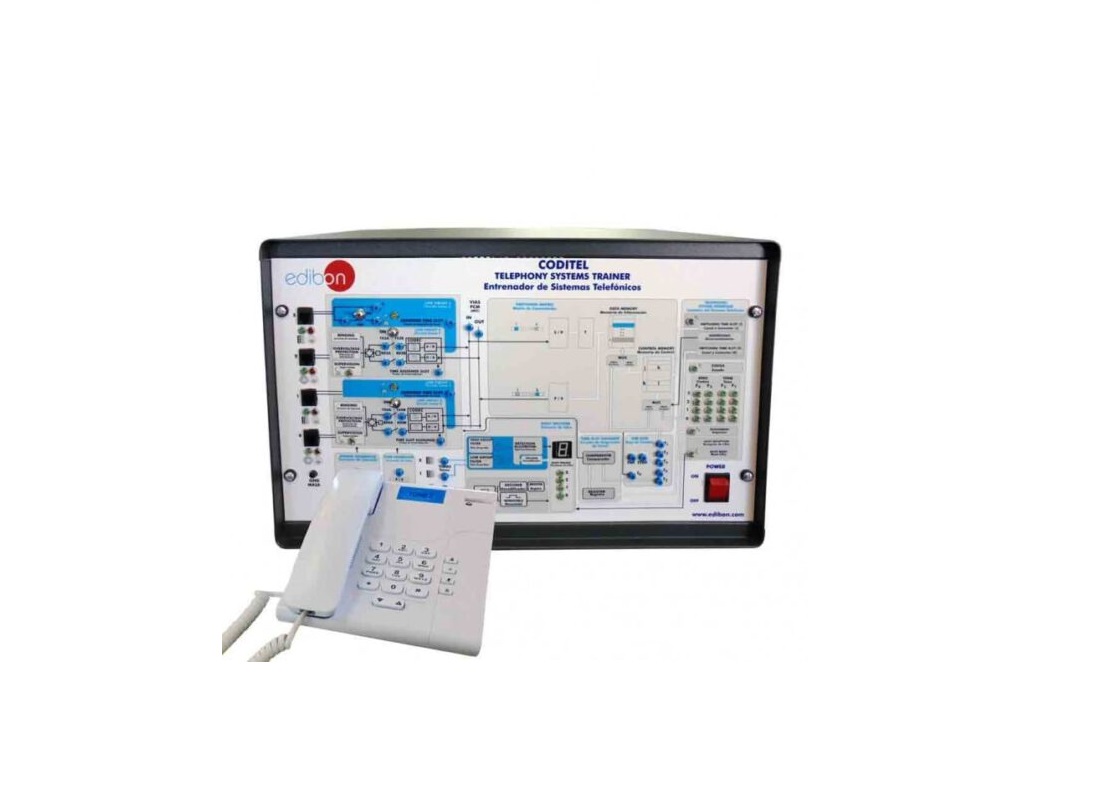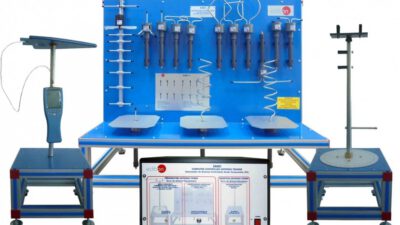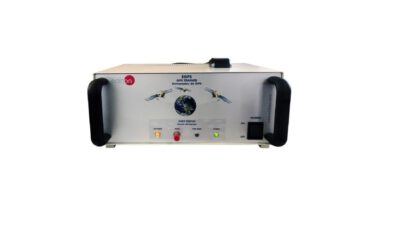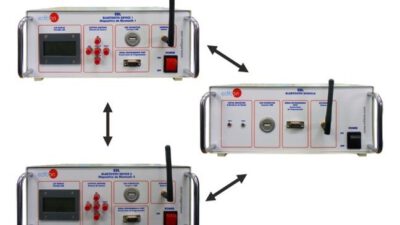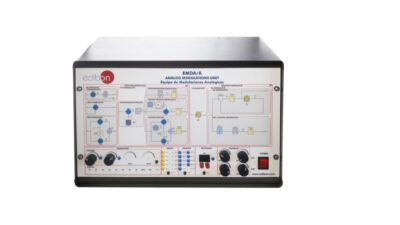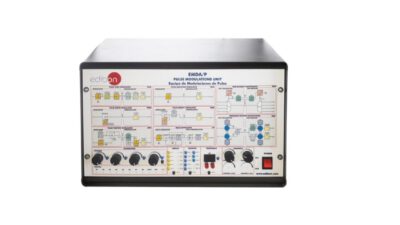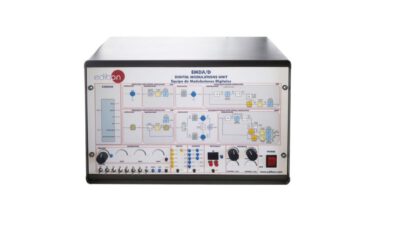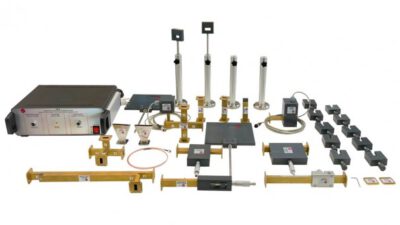CODITEL is a digital circuit commutation unit for didactic purposes. Its structure is like a temporal commutator structure with two MIC ways, one inlet way and one outlet way. Basically, it follows the recommendation of the CCITT and of Telephony.
This unit consist of the following parts: interfaces (connection with the outer world), internals, digital connection network and control system:
SPECIFICATION
System is mounted on a desktop box.
Diagram in the front panel of the unit with the same structure as the real hardware.
Provides access to all main signals. Follows all the recommendations of CCITT (Cosultive Comitte International Telephony and Telegraphy).
Structure is based on the standard for digital commutation systems.
Time division multiplexing(TDM) and Pulse code Modulation (PCM) principles.
Communication based on a temporal commutator that supports up to fifteen complete internal communications with two MIC ways, one inlet way and one outlet way.
Standard MIC system of 32 channels with dynamic assignament and frame synchronization. 30 channels used for voice transmission and 2 used for signalling and synchronism. Signal conversion using standard codec, 8 KHz of sample rate, 8 bits per sample and 64Kb/s per channel and 2,048 Mb/s system frame.
Internal hardware consists of two electronics boards: an analog board with all integrated and discrete analog elements and a digital board based on FPGA technology.
Structure integrated with all the internal common elements in a telephone system: subscriber´s line, tone generator, base of times, filtering stage, switching matrix, number decoders and control memory.
Two subscriber`s lines implemented with discrete elements (hybrid coils, ring circuit, supply circuit).
Two subscriber`s lines implemented with integrated elements Subscriber`s Line Interface Circuits (SLIC).
Functions as battery feed, overvoltage protection, ringing, coding and decoding, supervision, signalling, 2-4 wires conversion and test( BORSCHT functions) covered, in each line.
High precision digital tone synthetizer 400 Hz (dial invitation tone, call recapturing tone and busy tone) using Direct Digital Synthetizer (DDS).
Four commercial receptors (telephones), two used for signaling by pulses and other two for tones or Dual Tone Multi Frequency Signalling (DTMF).
Switching memory matrix, control memory and base of times implemented with FPGA technology with high stability and fiability.
Standard RS232 protocol for communication between the PC and the unit

